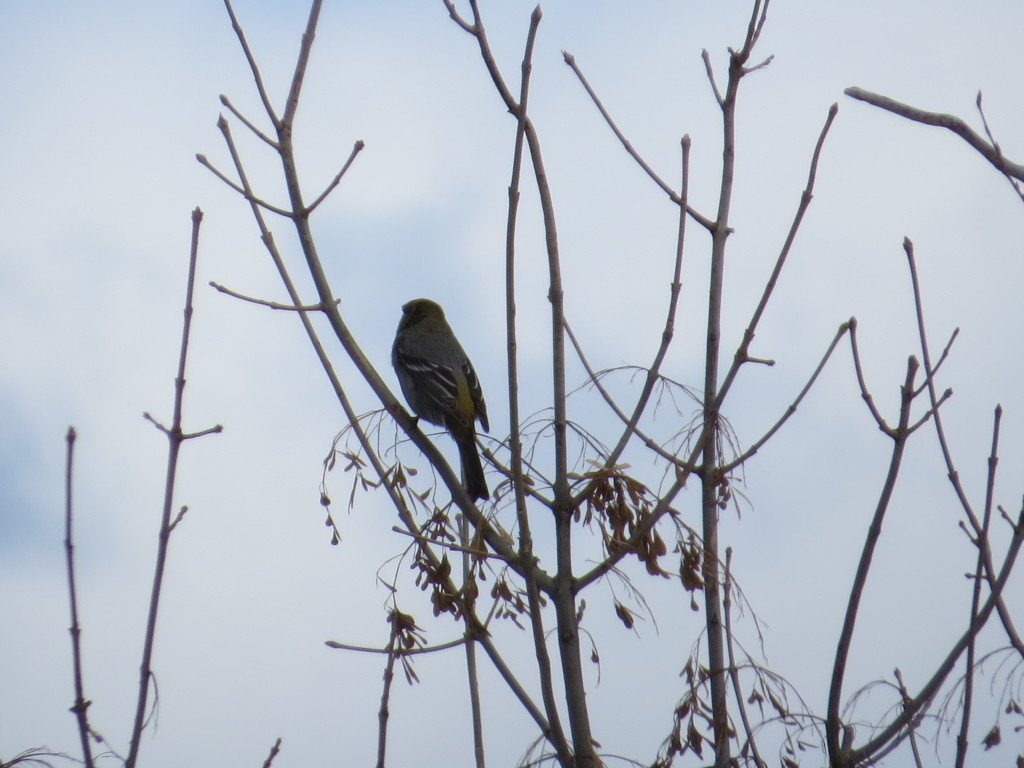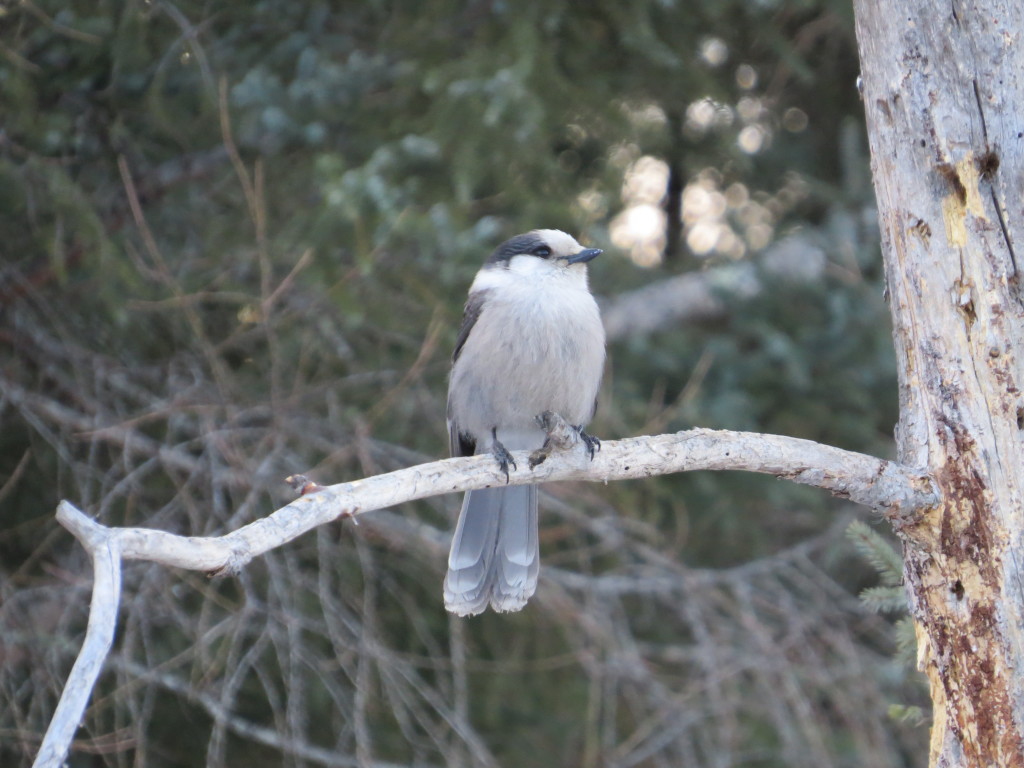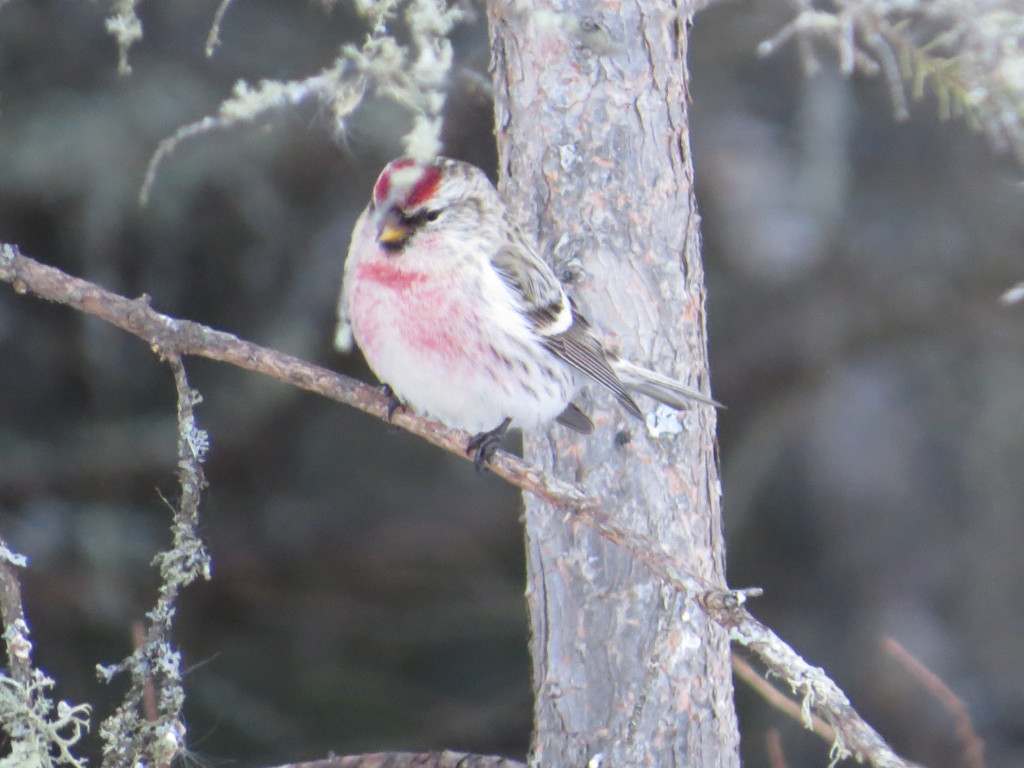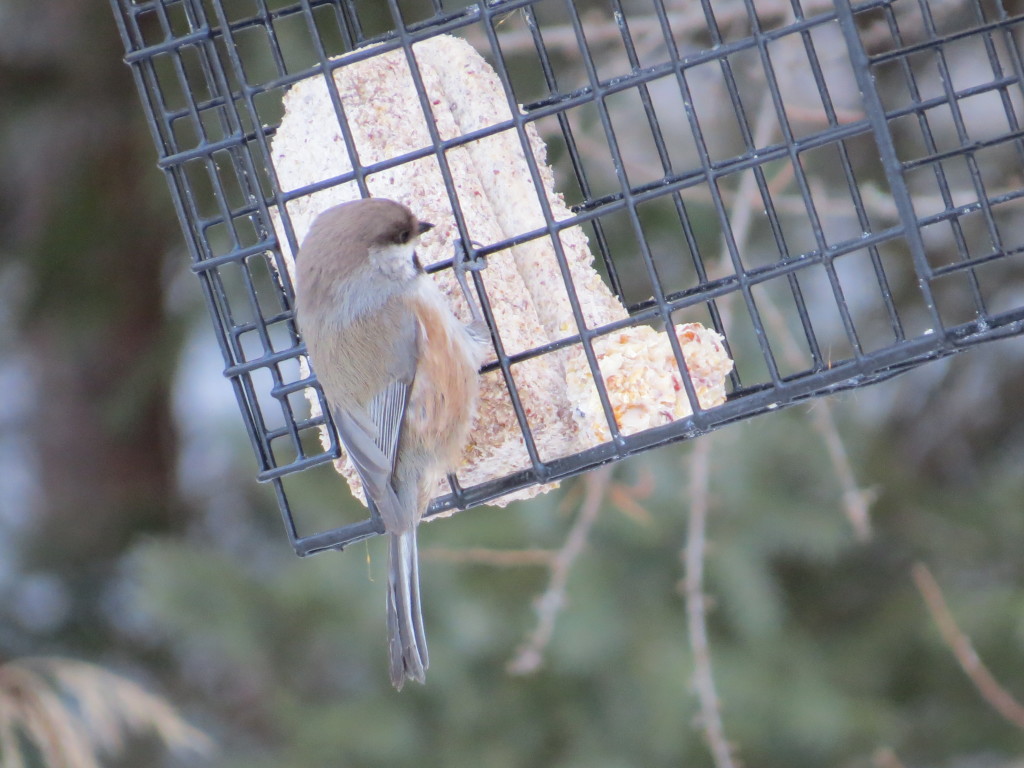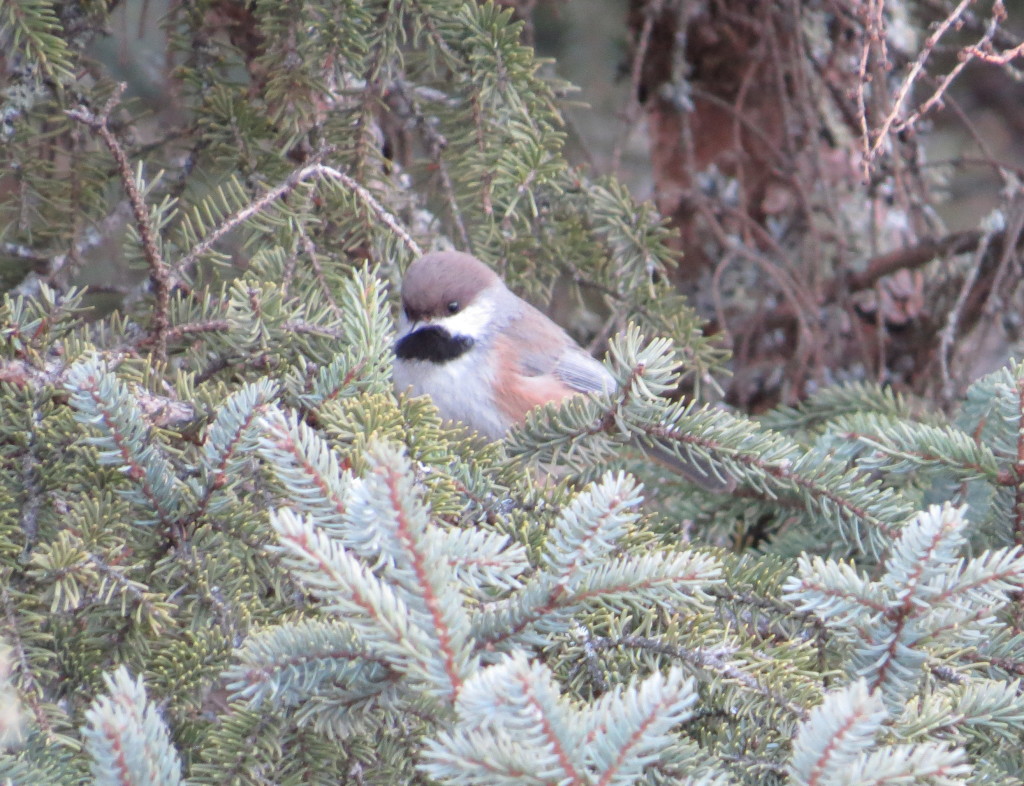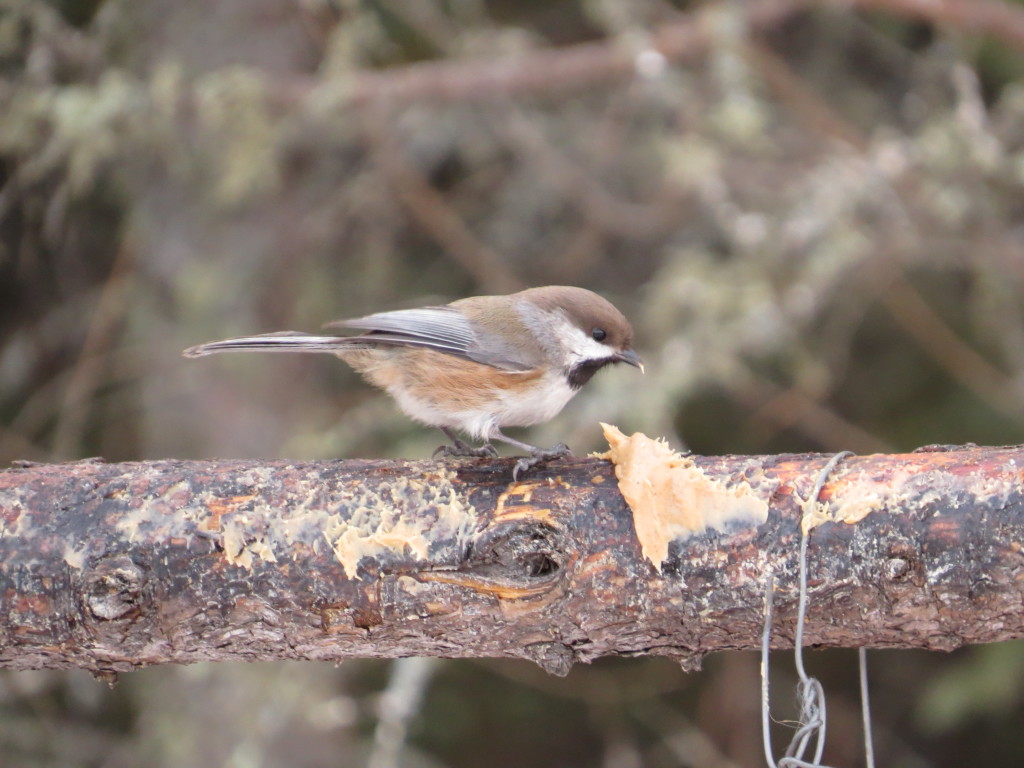Dear Regular Readers,
I hate to disappoint both of you, but this is not the next installment of the Arizona series. Believe it or not, but birding after Arizona does exist and the birds back home don’t wait for blog posts to be written. This all brings us to today’s story that is a worthy interruption of the AZ trip reports. It decisively crushed my moping for not being in AZ anymore. I think you’ll concur.
So here goes. On Monday, November 2nd, my wife and I each had a scheduled day off. With the kids in school, I asked her what her plans were. When she said she was grading papers all day, the spousal guilt was gone and the plans to chase a Surf Scoter on Orchard Lake in Lakeville were on.
 I drove along the west shore of the lake and pulled into a boat launch to scan the waters. Right away I saw a binocular-clad gentleman loading a spotting scope into a shiny Prius–this birder could be spotted a mile away. I asked him if he saw the duck. He told me no and said he’d missed on it multiple times. Odd, I thought, as I recalled the duck being reported every single day for the better part of a week. After this exchange, he and I both headed to Orchard Lake Park on the south end of the lake where people had said was the best place from which to see the Scoter. He had the lead as I followed his car into the parking lot. Rather than parking in a stall, he faced his vehicle directly at the water. I parked, looked at the water and instantly saw a distant, giant, black-and-white blob that had Surf Scoter GISS written all over it. Before I could get my binoculars up to verify, the other birder, who never left his car, turned around after 30 seconds and drove out of the park! My desire to look at my Surf Scoter lifer was suddenly replaced by the fear that this guy might have, somehow, missed it. Was it diving when he looked? Did he not recognize this juvenile form of this species? Did he see it, get his tic, and just peel out? Even if the guy was just a lister, who doesn’t spend at least a couple minutes enjoying looking at an ocean-going Scoter in MINNESOTA? I panicked. I hesitated. Do I race after him on foot and pound on his trunk? Do I hop in my car and chase him down? You can’t save them all, I guess. Oh, well. Let’s have a look at that Surf Scoter…
I drove along the west shore of the lake and pulled into a boat launch to scan the waters. Right away I saw a binocular-clad gentleman loading a spotting scope into a shiny Prius–this birder could be spotted a mile away. I asked him if he saw the duck. He told me no and said he’d missed on it multiple times. Odd, I thought, as I recalled the duck being reported every single day for the better part of a week. After this exchange, he and I both headed to Orchard Lake Park on the south end of the lake where people had said was the best place from which to see the Scoter. He had the lead as I followed his car into the parking lot. Rather than parking in a stall, he faced his vehicle directly at the water. I parked, looked at the water and instantly saw a distant, giant, black-and-white blob that had Surf Scoter GISS written all over it. Before I could get my binoculars up to verify, the other birder, who never left his car, turned around after 30 seconds and drove out of the park! My desire to look at my Surf Scoter lifer was suddenly replaced by the fear that this guy might have, somehow, missed it. Was it diving when he looked? Did he not recognize this juvenile form of this species? Did he see it, get his tic, and just peel out? Even if the guy was just a lister, who doesn’t spend at least a couple minutes enjoying looking at an ocean-going Scoter in MINNESOTA? I panicked. I hesitated. Do I race after him on foot and pound on his trunk? Do I hop in my car and chase him down? You can’t save them all, I guess. Oh, well. Let’s have a look at that Surf Scoter…
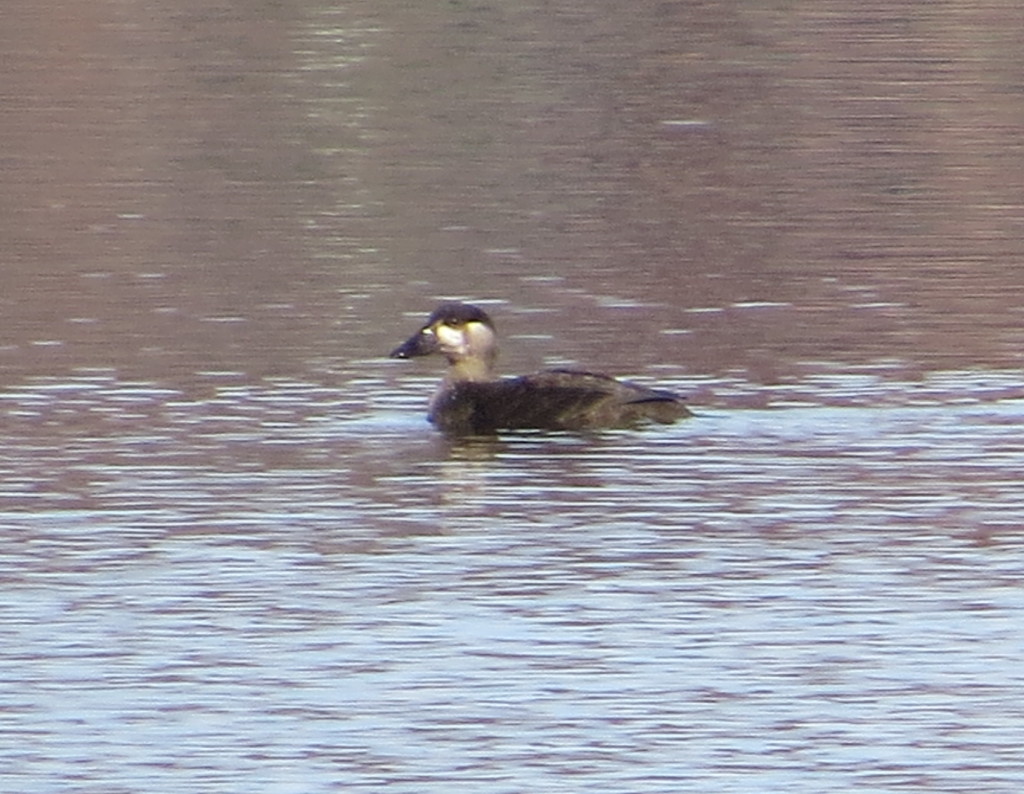 This is now my fifth species of sea duck in Minnesota with White-winged Scoter, Harlequin Duck, Common Eider, and Long-tailed Duck making up the others. I kind of prefer my sea ducks on the turbulent, cold waters of Lake Superior on a gray day. That kind of backdrop adds to the mystique and allure of sea ducks. Seeing one on a placid metro lake reflecting lingering fall colors on a 72° day is just kind of so-so.
This is now my fifth species of sea duck in Minnesota with White-winged Scoter, Harlequin Duck, Common Eider, and Long-tailed Duck making up the others. I kind of prefer my sea ducks on the turbulent, cold waters of Lake Superior on a gray day. That kind of backdrop adds to the mystique and allure of sea ducks. Seeing one on a placid metro lake reflecting lingering fall colors on a 72° day is just kind of so-so.
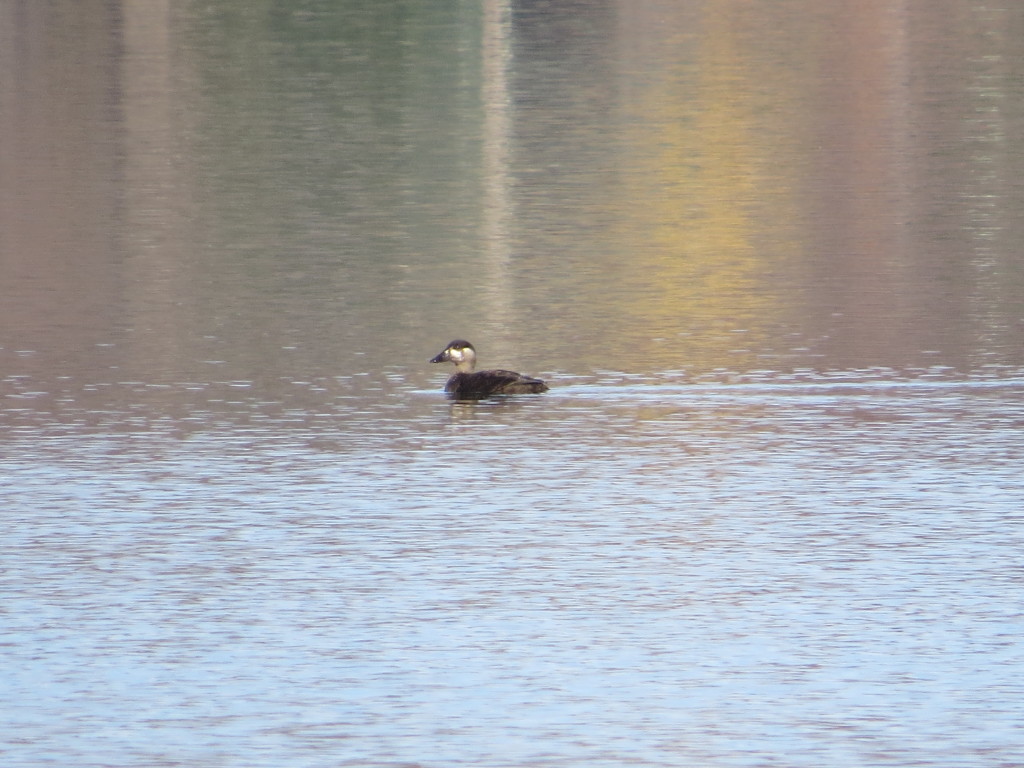 But even still. It’s cool. I mean, it’s a Scoter.
But even still. It’s cool. I mean, it’s a Scoter.
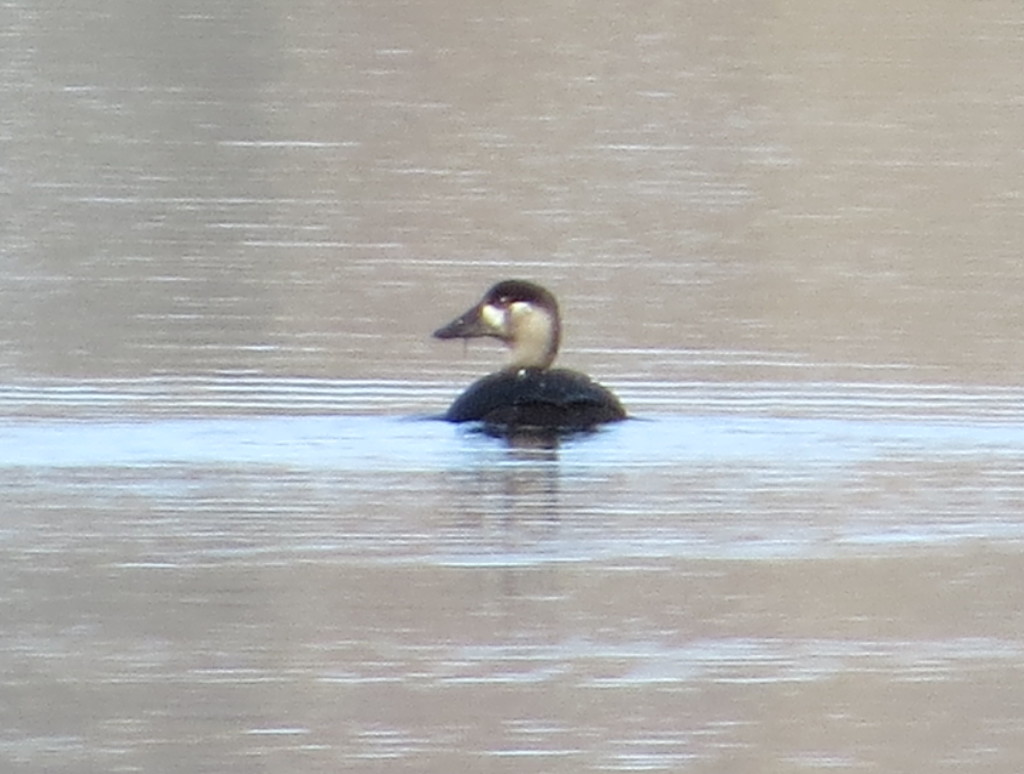
This Scoter was kind enough to land in a location which would cause me to literally drive right by my brother’s office in Burnsville. Having lunch with Jason made a successful chase even better, all the more so because he took me to a secret hole-in-the-wall called J’s Cafe with amazing down-home cooking. After catching up with Jason, it was time to hit the road: he had to get back to the office, and I had to make the 2-hour drive home to pick up my kids after school.
Despite being crunched for time, there’s always time for one more bird. I took a route home through Glencoe, hoping to see Pumpkins, the reliable, super-early Snowy Owl that got its name from landing on a cart of pumpkins for sale. Pumpkins wasn’t selling any pumpkins to me, though.
Moving on, I was racing the clock to get back in time for the kids. When I was traveling down a county road just a few miles away from the school, I saw a large raptor perched on a pole. I always look even though practically every raptor is a Red-tailed Hawk in these parts. As I streaked by, I saw the GISS for a Red-tail was off, way off. I stopped to look.
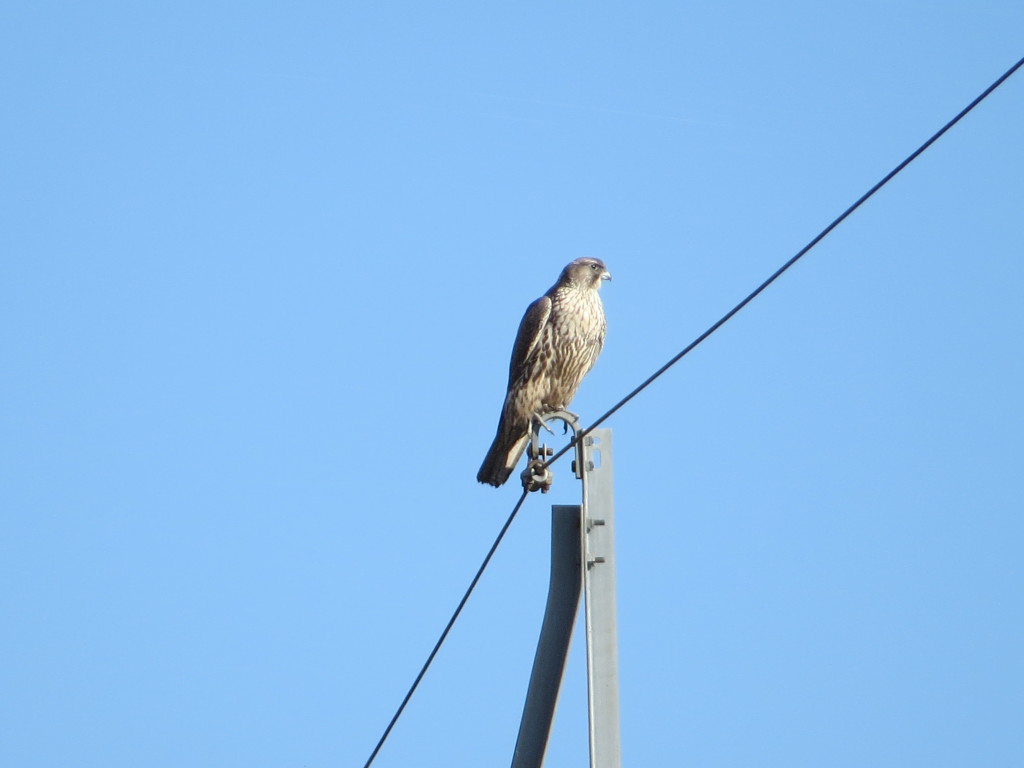
I saw heavy streaking on the breast on this large bird and a white eyebrow, and thought I just might be looking at a juvenile Northern Goshawk! Instantly I started taking pictures like mad to document such a rarity. But honestly, as I looked at the bird, I wondered, ‘What in the world is this thing?’ Comparing my photos to Goshawk photos on my phone, I saw that was wrong. I realized then that the face looked like that of a Falcon. The best I could figure on my limited knowledge was that it was a juvenile Peregrine Falcon–the most probable of all the larger Falcons for our area. A Peregrine is one of those feel-good birds. It’s not listserv-worthy, but it’s just rare enough that when you lay your head on your pillow at night you think, ‘That was pretty neat.’ It’s the kind where you giddily submit your eBird checklist and post a picture to the regional birding FB group…even if it didn’t quite look like juvenile Peregrines in Sibley or online…
That’s when my naivete was laid bare to all. I hadn’t studied for the test. I winged it. When I saw there was a lengthy comment from Bob Dunlap, one of the lords of bird identification in Minnesota, I couldn’t read his words fast enough. Bob was asking for more photos and asked me about my impression of the size. The all-gray cheek and faint mustache wasn’t exactly giving him a Peregrine vibe on this Falcon… To remove all doubt about his line of thinking, he followed up with another comment, “And by the way, Merlin is not the direction I’m leaning…”
No. Nooooo way. A Gyr–? I couldn’t even type the name; I was afraid to even think it might be true. It couldn’t be true. Could it? I mean, a bird that’s never been in Minnesota since I started birding? Here? In the home county? Unh-uh. Can’t be. But under Bob’s advisement I sent out a cautionary report of a possible G….Gy…Gyr…Gyrfalcon on both the listserv and the Minnesota Birding FB group. Beforehand, I set up a new page on this blog, called “Falcon Photos,” where I dumped all my photos so people could analyze them.
The responses were as overwhelming as they were fast:
“Wow!!! Gray type juvenile Gyrfalcon for sure! Awesome find, and great photo!” -Alex Lamoreaux, Hawk Ridge Bird Observatory Counter
“No question gyr!” -Kathleen MacAulay, Veterinary Intern at the Raptor Center
“That looks like a gyr to me.” -Jean Matheny, Falconer
“Great bird. Looks like a gyr to me. I chase sightings in S.D. where they are annual visitors on the grasslands near Pierre.” -Jim Williams, Bird Blogger/Columnist for the Star Tribune
And here was the one that put a big fat bow on it all:
“Josh – My first impression was a juvenile gray-morph Gyrfalcon, so I asked Frank Nicoletti (Hawk Ridge bander & former counter, and one of MN’s foremost raptor experts) his opinion. Without hesitation, he confirmed the ID as a juv Gyr. Hope this helps, and nice find!” -Kim Eckert, one of MN’s most experienced and highly regarded birders
GYRFALCON!!!!
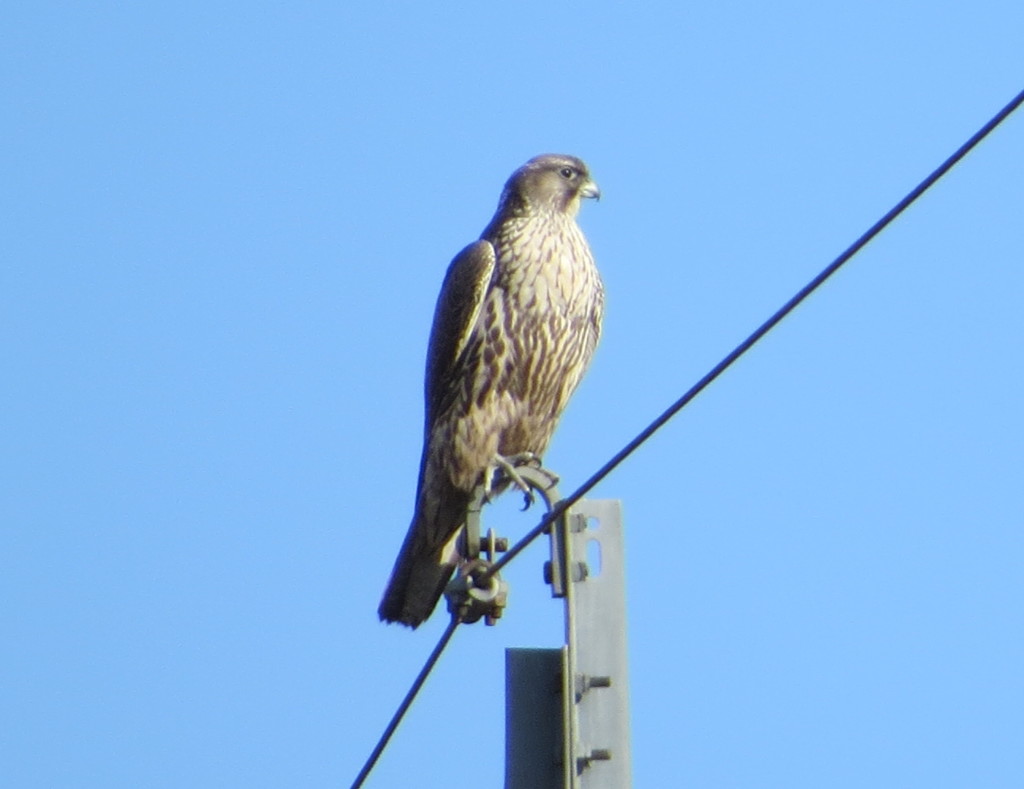
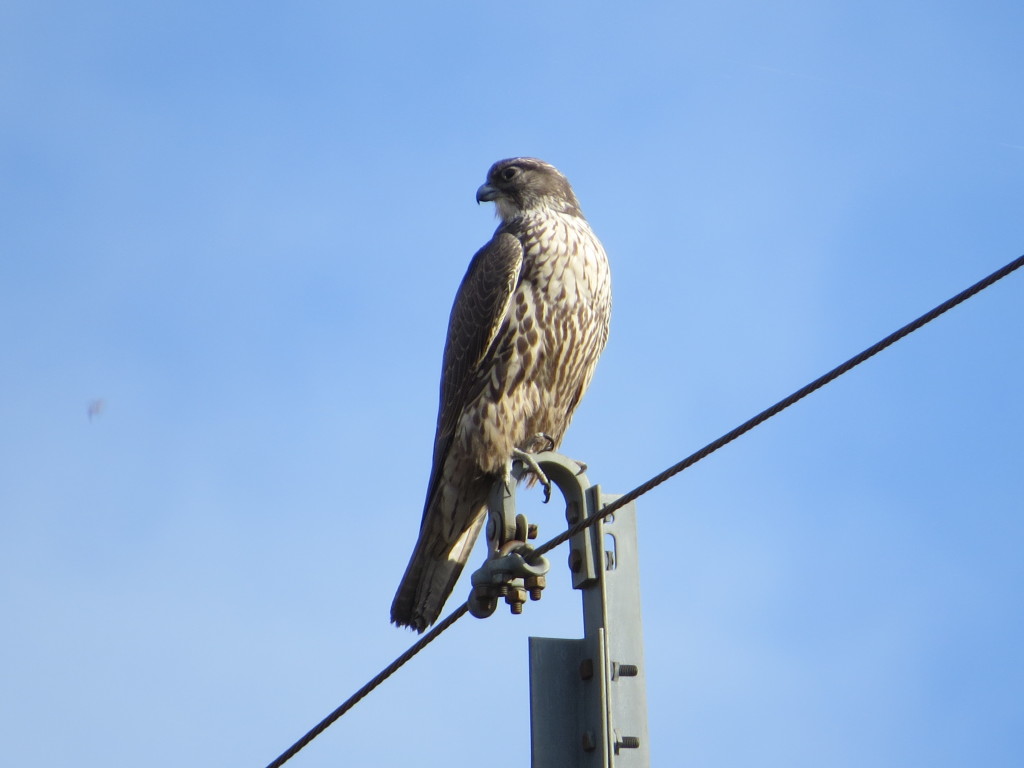
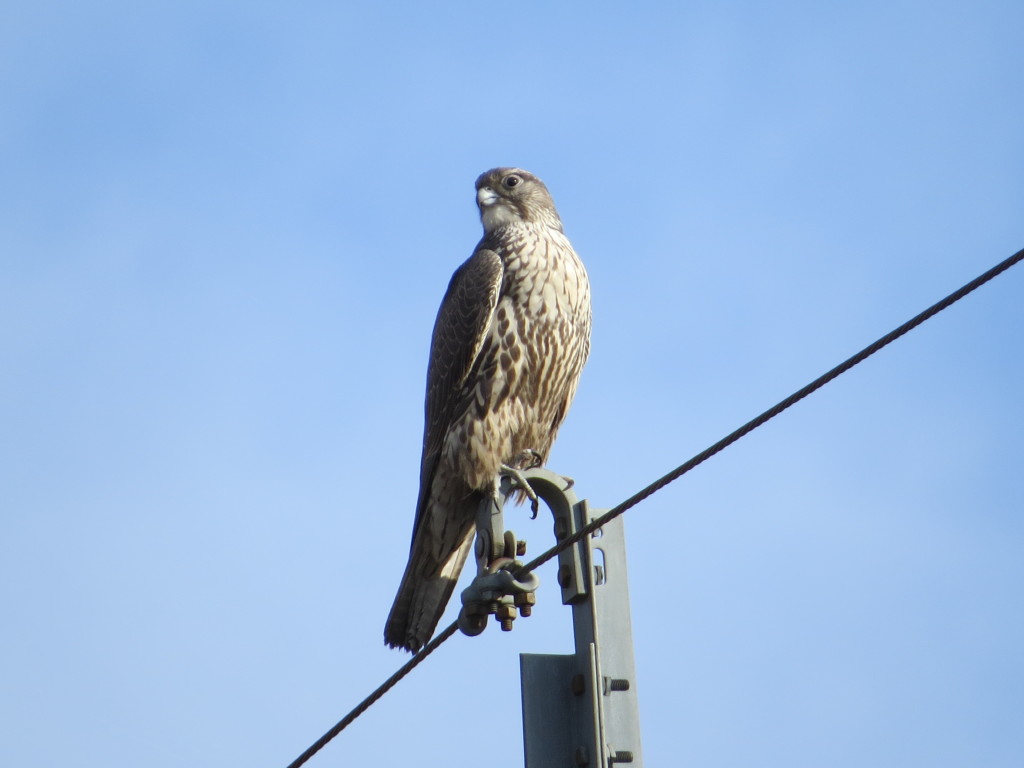
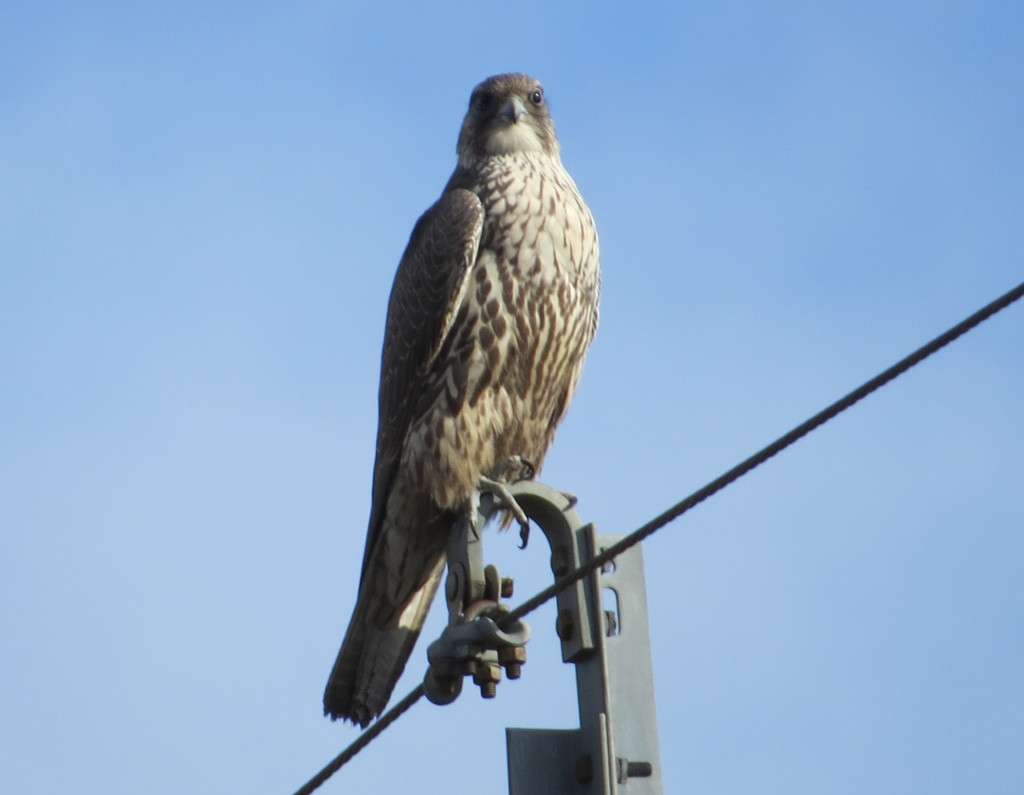 I still can’t believe I saw this bird; the adrenaline is still pumping. I thought it would be another 10 years at least before I’d get this arctic visitor on my Minnesota list (I got my lifer in WI last winter). Then I see a Gyrfalcon in my own county…and I never even knew it. I was caught off guard and completely unprepared for encountering such a rarity. It just goes to show that one can never study enough in this hobby and that even the most boring, familiar back roads can hold the monumental. So thanks, Bob, for chasing me down and pounding on my trunk.
I still can’t believe I saw this bird; the adrenaline is still pumping. I thought it would be another 10 years at least before I’d get this arctic visitor on my Minnesota list (I got my lifer in WI last winter). Then I see a Gyrfalcon in my own county…and I never even knew it. I was caught off guard and completely unprepared for encountering such a rarity. It just goes to show that one can never study enough in this hobby and that even the most boring, familiar back roads can hold the monumental. So thanks, Bob, for chasing me down and pounding on my trunk.


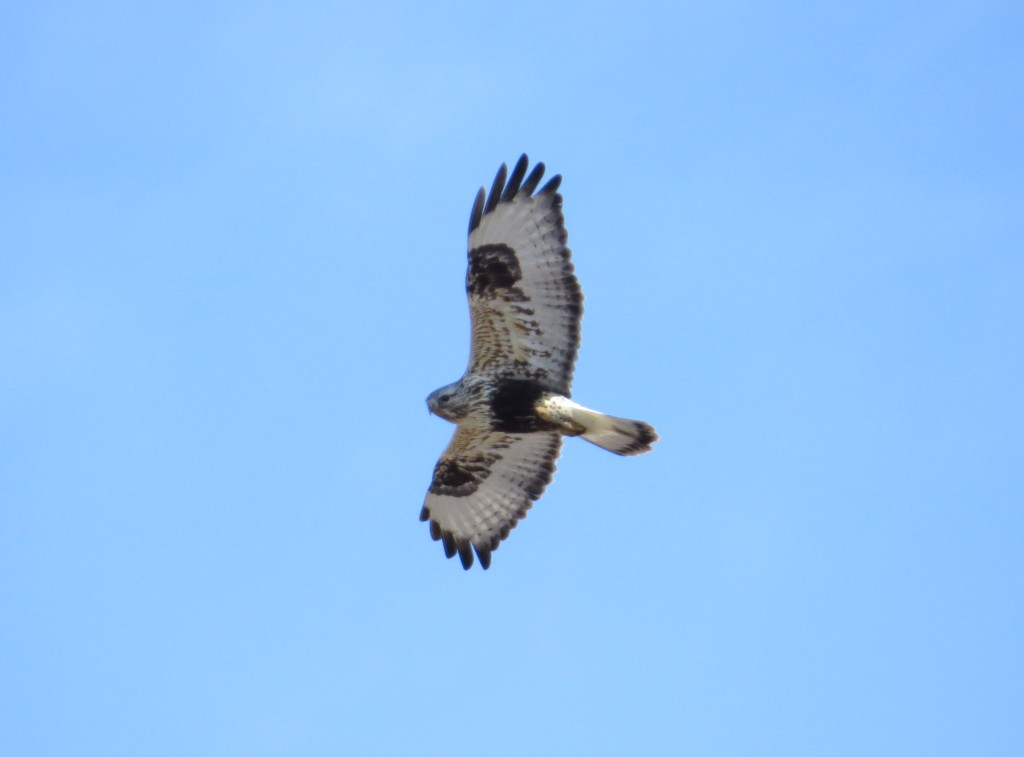


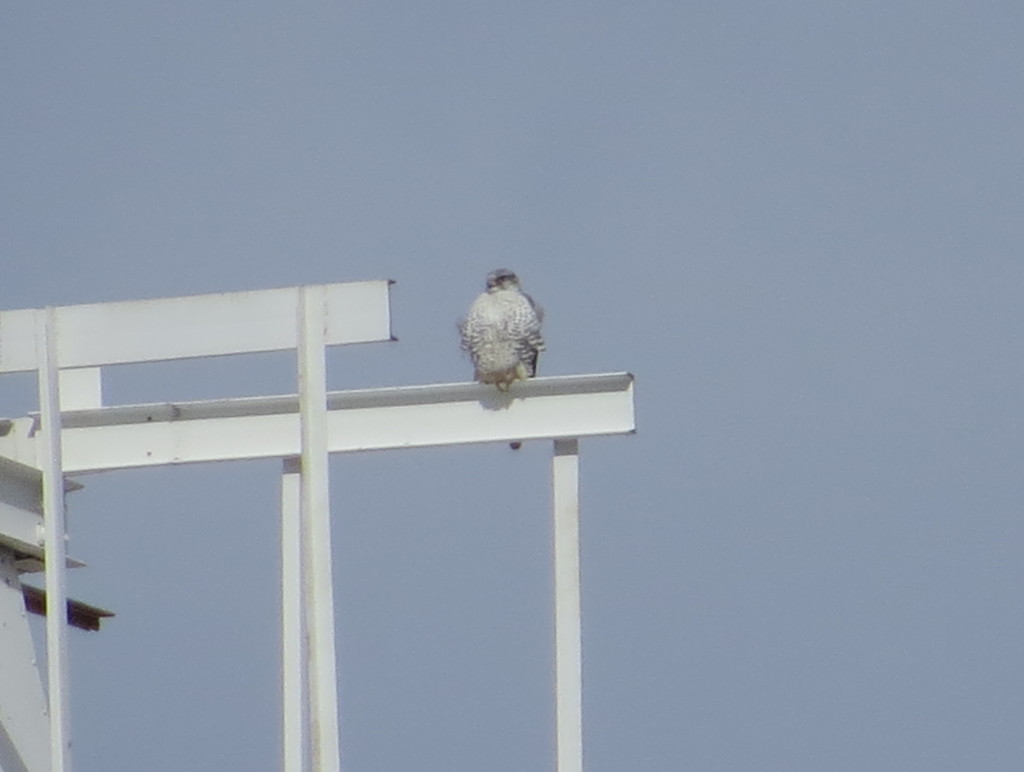
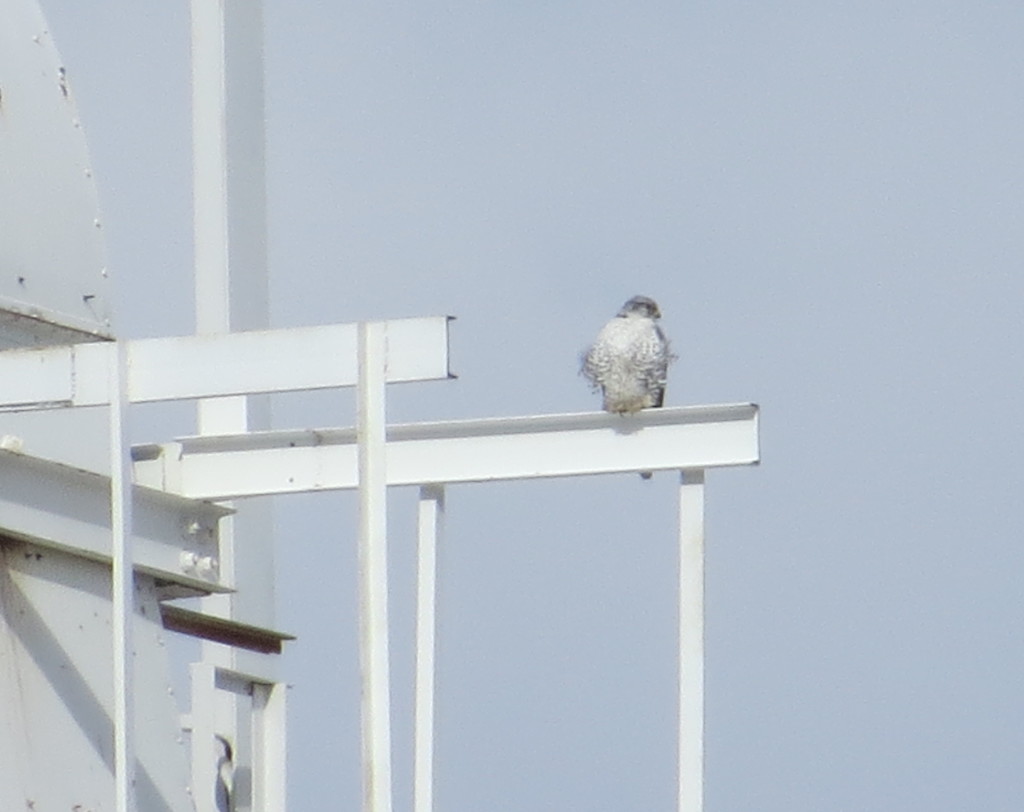 Some fun history on Gyr is that this same individual was caught and banded in 2003 in the Duluth/Superior area. At the time it was a third-year bird. It ended up returning every winter for four years and then did not return until this year! Given when it was banded, the age of this male Gyrfalcon is estimated to be 14 years 8 months–the oldest Gyrfalcon on record!
Some fun history on Gyr is that this same individual was caught and banded in 2003 in the Duluth/Superior area. At the time it was a third-year bird. It ended up returning every winter for four years and then did not return until this year! Given when it was banded, the age of this male Gyrfalcon is estimated to be 14 years 8 months–the oldest Gyrfalcon on record!